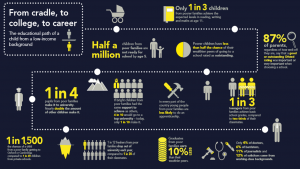Why not join Team Up yourself?
Sadly, my time at Team Up has come to an end. I successfully completed the progress and baseline assessments mentioned previously and started the long process of updating the lesson materials. This involved mapping the lessons to the key learning points on the syllabus and finding example exam-style questions for each lesson. Unfortunately, I didn’t have time to implement many of the changes I identified. However, whoever takes over the task in the future has a set of detailed notes and instructions regarding what changes need to be made.
I learned a lot from my time at Team Up: I experienced working in an office environment, I worked collaboratively in a small team and individually towards the end of the internship. I learned about the day-to-day running of a small charity. I was assigned a single task to work on throughout my time at the office, however many of the other employees have very varied roles and responsibilities. You have to be very flexible and open-minded to work in this environment, as well as realistic about what you are able to achieve and when you have taken on too much work.
I am looking forward to continuing to work with Team Up throughout the coming academic year. Unfortunately, I have to wait until my timetable comes through to see if it allows me to sign up for a tuition session in a school. But, if this doesn’t work, I will continue my engagement as Chair of Imperial’s Team Up society!
If you think that you could share your knowledge and experience with students from disadvantaged backgrounds, why not join Team Up yourself? Opportunities are posted on their website or come and visit us at Fresher’s Fair!
